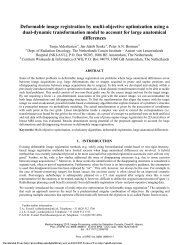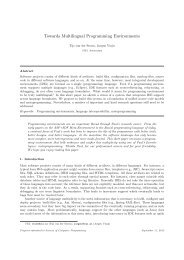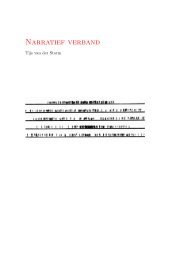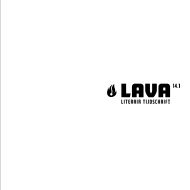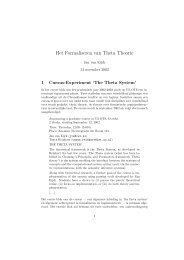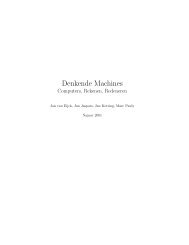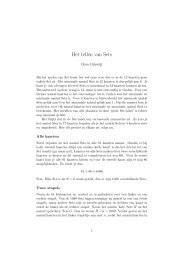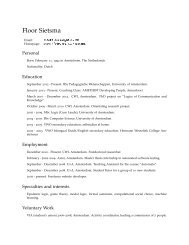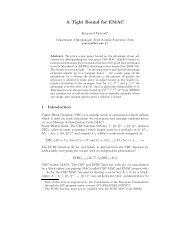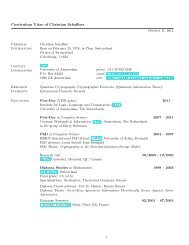Object-Oriented Databases Need for Complex Data Types - CWI
Object-Oriented Databases Need for Complex Data Types - CWI
Object-Oriented Databases Need for Complex Data Types - CWI
You also want an ePaper? Increase the reach of your titles
YUMPU automatically turns print PDFs into web optimized ePapers that Google loves.
<strong>Data</strong>base System Concepts<br />
<strong>Object</strong>-<strong>Oriented</strong> <strong>Object</strong> <strong>Oriented</strong> <strong>Data</strong> Model<br />
Loosely speaking, an object corresponds to an entity in the E-<br />
R model.<br />
The object-oriented paradigm is based on encapsulating code<br />
and data related to an object into single unit.<br />
The object-oriented data model is a logical data model (like<br />
the E-R model).<br />
Adaptation of the object-oriented programming paradigm (e.g.,<br />
Smalltalk, C++) to database systems.<br />
<strong>Data</strong>base System Concepts<br />
8.3<br />
<strong>Object</strong> Structure<br />
An object has associated with it:<br />
8.4<br />
©Silberschatz, Korth and Sudarshan<br />
A set of variables that contain the data <strong>for</strong> the object. The value of<br />
each variable is itself an object.<br />
A set of messages to which the object responds; each message may<br />
have zero, one, or more parameters.<br />
A set of methods, each of which is a body of code to implement a<br />
message; a method returns a value as the response to the message<br />
The physical representation of data is visible only to the<br />
implementor of the object<br />
Messages and responses provide the only external interface to an<br />
object.<br />
The term message does not necessarily imply physical message<br />
passing. Messages can be implemented as procedure<br />
invocations.<br />
©Silberschatz, Korth and Sudarshan<br />
2



